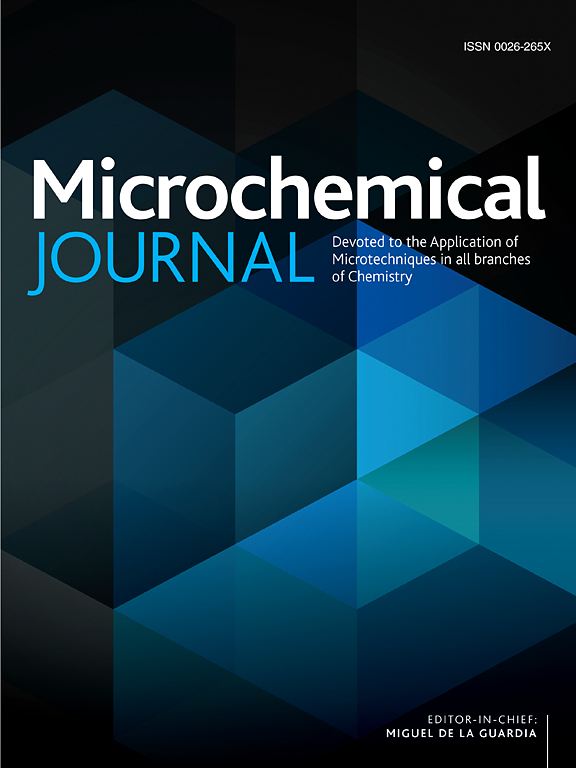Antioxidant properties from Tagete filifolia essential oil with high estragole + anethole content by analysis of thermal stability and oxidation: chemical, volatile and sensory determinations
IF 4.9
2区 化学
Q1 CHEMISTRY, ANALYTICAL
引用次数: 0
Abstract
Tagete filifolia essential oil (TEO) with a high content of estragole and anethole is thermally stable and protects lipids from oxidation, which allows it to be potentially used as an antioxidant. The objective of this research is to assess the TEO with high content (+95 %) of estragole and anethole (22.8 % and 77.0 % respectively) as a possible crop for industrial application, considering its potential antioxidant activity. The thermal stability of TEO (60 °C − 28 days) was determined by analysing its volatile chemical composition (SPME-GC–MS). Indirect antioxidant activity of TEO was performed with Free Radical Scavenging Activity (FRSA-DPPH) and Total Phenol Content (TPC). Direct measurement used an accelerated oxidation test at 60 °C for 14 days in concentrations of 0.02, 0.10 and 0.20 %w/w of EO in sunflower vegetable oil (chemical, volatile and sensory oxidation compounds were analysed). The results showed that anethole and estragole are thermally resistant, and together amount to 99.8 % after 28 days. Estragole decreased from 24.3 % to 21.3 %, while anethole increased from 75.1 % to 78.5 % between day 0 and day 28 of the trial. Indirect measurement revealed low FRSA (11.1 % of DPPH inhibition) and TPC (2.1 mg/g) activity. In the direct determination, protection against the control was observed (TOTOX Value Control > TEO > BHT0.02 %; 186, ≈ 150 and 134, respectively); However, the antioxidant activity did not show a direct correlation between the dose level used and the expected response. The results indicated that the essential oil could be applied as an antioxidant in a variety of products.

求助全文
约1分钟内获得全文
求助全文
来源期刊

Microchemical Journal
化学-分析化学
CiteScore
8.70
自引率
8.30%
发文量
1131
审稿时长
1.9 months
期刊介绍:
The Microchemical Journal is a peer reviewed journal devoted to all aspects and phases of analytical chemistry and chemical analysis. The Microchemical Journal publishes articles which are at the forefront of modern analytical chemistry and cover innovations in the techniques to the finest possible limits. This includes fundamental aspects, instrumentation, new developments, innovative and novel methods and applications including environmental and clinical field.
Traditional classical analytical methods such as spectrophotometry and titrimetry as well as established instrumentation methods such as flame and graphite furnace atomic absorption spectrometry, gas chromatography, and modified glassy or carbon electrode electrochemical methods will be considered, provided they show significant improvements and novelty compared to the established methods.
 求助内容:
求助内容: 应助结果提醒方式:
应助结果提醒方式:


